Living with a prosthesis can significantly improve the quality of life for many individuals. However, maintaining the health of your skin and the cleanliness of your prosthetic limb is essential to ensuring comfort, preventing complications, and maximizing the lifespan of your prosthesis. This guide will provide you with practical tips and advice on skincare and hygiene while living with a prosthesis.
Understanding the Importance of Skin Care
Your skin is the largest organ in your body and serves as a barrier against infections, regulates body temperature, and provides sensory information. When you use a prosthesis, the skin in contact with the device experiences unique challenges, such as increased pressure, friction, and moisture. Without proper care, these factors can lead to skin irritation, infections, and other complications that may affect your comfort and the functionality of your prosthesis.
Daily Skincare Routine
- Clean Your Residual Limb: Every day, it’s crucial to clean the skin of your residual limb (the area where the prosthesis attaches) to remove sweat, dirt, and bacteria. Use a mild, fragrance-free soap and lukewarm water. Avoid harsh soaps or cleansers that can dry out your skin or cause irritation. After washing, gently pat the area dry with a clean towel—never rub, as this can cause friction and irritation.
- Moisturize Regularly: Keeping the skin on your residual limb moisturized is essential to prevent dryness and cracking, which can lead to infections. Use a fragrance-free, hypoallergenic moisturizer that is specifically designed for sensitive skin. Apply the moisturizer at night before bed, allowing it to fully absorb before putting on your prosthesis in the morning. Avoid applying moisturizers right before wearing your prosthesis, as it can make the skin too moist, leading to slippage and increased friction.
- Check for Irritation and Pressure Sores: Daily inspection of your residual limb is vital. Look for any signs of redness, blisters, or sores. These may indicate that your prosthesis is not fitting properly or that you need to adjust your skincare routine. If you notice any persistent skin issues, it’s important to consult with your healthcare provider or prosthetist.
Hygiene Practices for Your Prosthesis
- Clean Your Prosthesis Regularly: Keeping your prosthesis clean is as important as maintaining your skin. Depending on the type of prosthesis you have, the cleaning process may vary. For a prosthetic liner (the part that comes in direct contact with your skin), wash it daily with mild soap and water. Rinse it thoroughly to remove all soap residue and let it air dry completely before reattaching it to the prosthetic socket. For the prosthetic socket itself, wipe it down with a damp cloth and mild cleanser, then dry it thoroughly.
- Prevent and Manage Odors: Odors can develop from sweat and bacteria build-up inside the prosthesis. To prevent this, ensure that both your skin and the prosthesis are kept clean and dry. Some individuals find it helpful to use a deodorizing spray or an antimicrobial liner to control odor. If the odor persists, consult your prosthetist, as this may indicate a need for a liner replacement or a different type of material.
- Avoid Prolonged Moisture: Moisture, whether from sweat or external sources, can create a breeding ground for bacteria, leading to infections and unpleasant odors. If you sweat heavily, consider using a moisture-wicking liner or applying an antiperspirant to your residual limb. Additionally, remove your prosthesis periodically throughout the day to allow your skin to air out.
Special Considerations for Different Types of Prostheses
- Upper Limb Prostheses: For those with upper limb prostheses, the skin on the residual limb may be more prone to dryness and cracking due to the limited air circulation within the prosthetic socket. In this case, moisturizing becomes even more crucial. Additionally, regular stretching exercises can help maintain muscle tone and flexibility in the residual limb, reducing the risk of skin issues.
- Lower Limb Prostheses: Individuals with lower limb prostheses may face additional challenges, such as increased pressure on the skin, especially if they are active or stand for long periods. It’s essential to pay extra attention to areas where the prosthesis exerts pressure, such as the heel or the ball of the foot. Regularly inspect these areas for any signs of pressure sores or calluses. If necessary, consider using gel liners or custom-made socks to alleviate pressure points.
- Hydraulic or Electronic Prostheses: Advanced prostheses with hydraulic or electronic components require special care to ensure they function correctly. While cleaning the prosthesis, be careful not to get water or cleaning agents into the electronic components. Follow the manufacturer’s guidelines for cleaning and maintenance to avoid damaging the prosthesis.
Managing Common Skin Issues
- Skin Irritation: Skin irritation is a common issue for prosthesis users. It can be caused by friction, pressure, or an allergic reaction to the materials used in the prosthesis. If you experience skin irritation, try adjusting the fit of your prosthesis or switching to a hypoallergenic liner. Over-the-counter hydrocortisone cream can help reduce inflammation, but it’s best to consult with your healthcare provider for persistent issues.
- Blisters: Blisters can form due to excessive friction or pressure between the skin and the prosthesis. To prevent blisters, ensure that your prosthesis fits properly and that you are using an appropriate liner or sock. If a blister forms, avoid popping it, as this can lead to infection. Instead, cover it with a sterile bandage and allow it to heal naturally.
- Infections: Infections can occur if bacteria enter the skin through cuts, blisters, or cracks. Signs of infection include redness, swelling, warmth, and pus. If you suspect an infection, seek medical attention immediately. To prevent infections, maintain good hygiene, keep the skin clean and dry, and avoid using dirty or damp liners and socks.
When to Seek Professional Help
While proper skincare and hygiene can prevent many issues, there may be times when you need to seek professional help. If you experience persistent pain, sores that won’t heal, or signs of infection, it’s essential to consult with your healthcare provider or prosthetist. They can help identify the underlying cause of the problem and recommend appropriate treatments or adjustments to your prosthesis.
Conclusion
Taking care of your skin and maintaining the hygiene of your prosthesis is crucial for your overall health and comfort. By following a daily skincare routine, keeping your prosthesis clean, and being mindful of potential skin issues, you can ensure that your prosthesis remains a positive aspect of your life, rather than a source of discomfort. Remember, your healthcare team is there to support you, so don’t hesitate to reach out if you have concerns or need advice. With the right care, you can enjoy a comfortable, active, and fulfilling life with your prosthesis.



